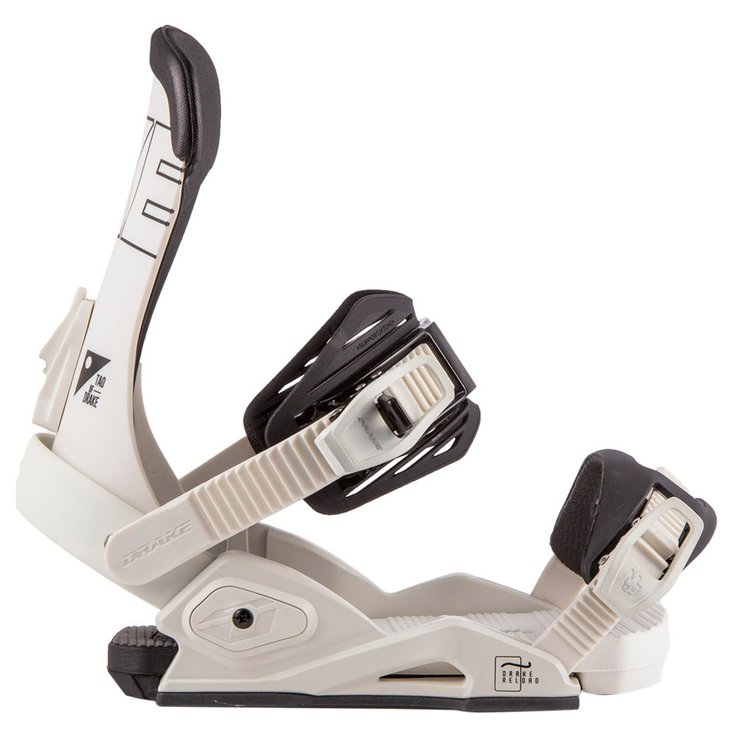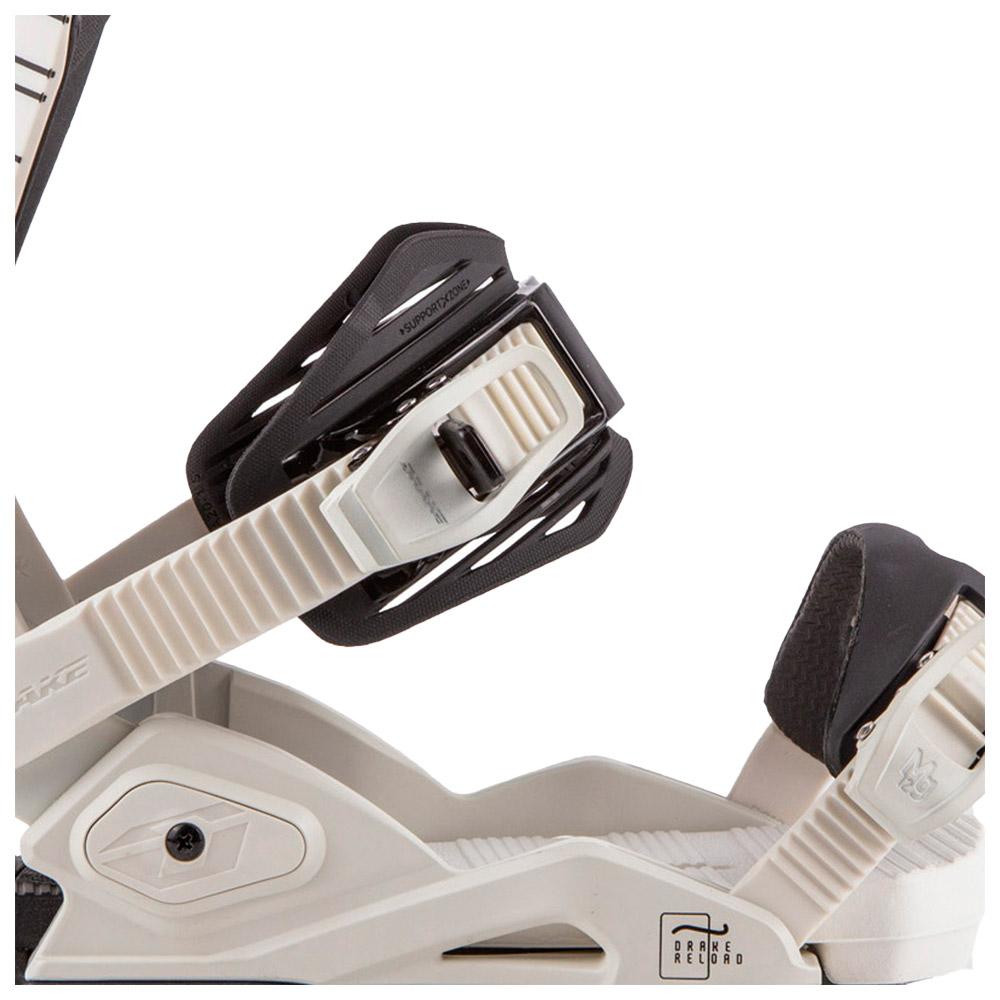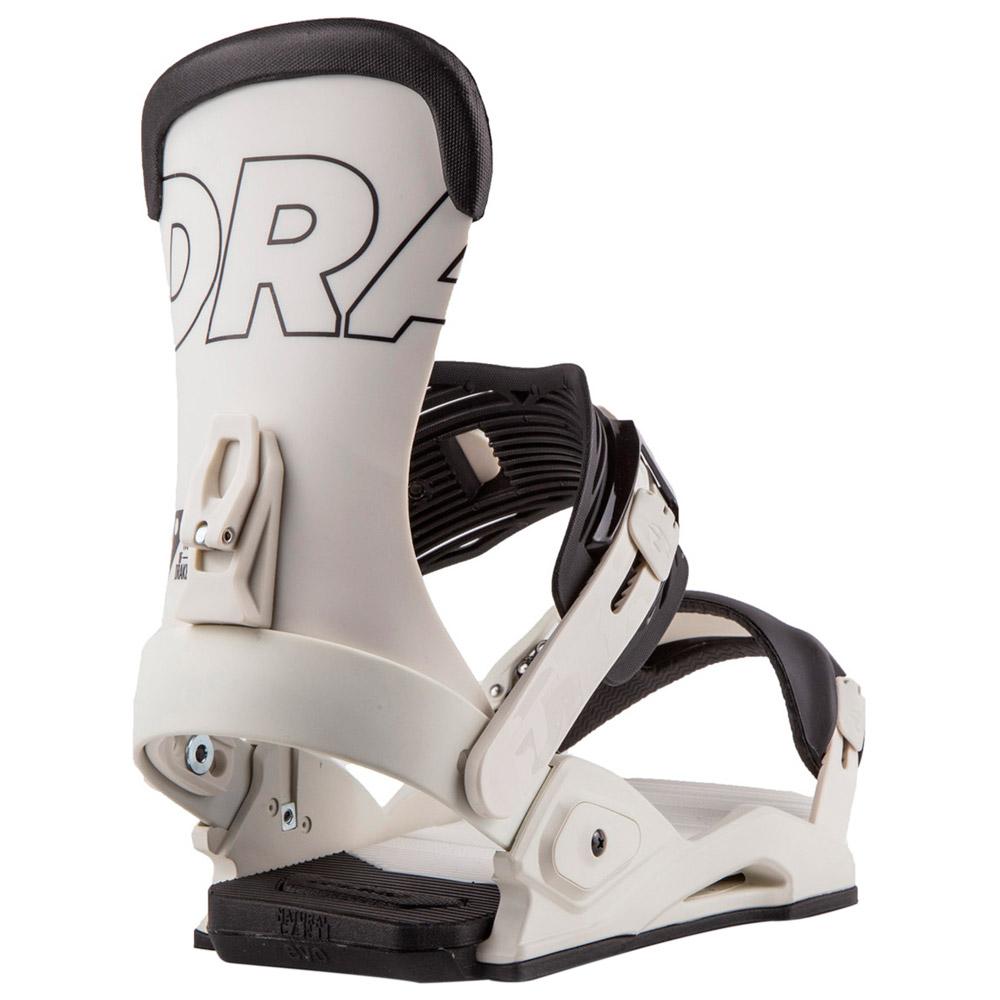38614065
Reload Off white
https://www.glisshop.co.uk/snowboard-bindings/drake/reload-off-white38614065
Drake
Men
Winter 2023
38614065
Ideal to defy gravity in the park as on the slopes or side hits, the Drake Reload Off white snowboard binding is a versatile freestyle model that offers lightness, playfulness and riding comfort.
https://glisshop-glisshop-fr-storage.omn.proximis.com/Imagestorage/imagesSynchro/0/0/ddc250a0166f5c1fe9220b0577ddb3ff0d044f8d_H23DRAKBIN3325412_0.jpeg
https://glisshop-glisshop-fr-storage.omn.proximis.com/Imagestorage/imagesSynchro/0/0/807c6c8d0fc7b07ca330e1d9a46850d424fd2874_H23DRAKBIN3325412_1.jpeg
https://glisshop-glisshop-fr-storage.omn.proximis.com/Imagestorage/imagesSynchro/0/0/923e4d9f4950114b4c224afc5c47889ba8f60dca_H23DRAKBIN3325412_2.jpeg
https://glisshop-glisshop-fr-storage.omn.proximis.com/Imagestorage/imagesSynchro/0/0/7ae505a79c547898d6c07de3626530c31b7d07d6_H23DRAKBIN3325412_3.jpeg
InStock
135.95
GBP
209.21
GBP_VAT_royaume_uni
SEK_VAT_france
1755.45
2701.32
SEK
packs always have stock if there is a price
InStock
SEK_VAT_france_corse
1755.45
2701.32
SEK
packs always have stock if there is a price
InStock
SEK_VAT_royaume_uni
1755.45
2701.32
SEK
packs always have stock if there is a price
InStock
SEK_VAT_espagne
1770.08
2701.32
SEK
packs always have stock if there is a price
InStock
SEK_VAT_italie
1784.71
2701.32
SEK
packs always have stock if there is a price
InStock
SEK_VAT_allemagne
1740.82
2701.32
SEK
packs always have stock if there is a price
InStock
SEK_VAT_pays_bas
1755.45
2701.32
SEK
packs always have stock if there is a price
InStock
SEK_VAT_belgique
1770.08
2701.32
SEK
packs always have stock if there is a price
InStock
SEK_VAT_suisse
1581.37
2701.32
SEK
packs always have stock if there is a price
InStock
SEK_VAT_suede
1828.59
2701.32
SEK
packs always have stock if there is a price
InStock
SEK_VAT_danemark
1755.45
2701.32
SEK
packs always have stock if there is a price
InStock
SEK_VAT_monaco
1755.45
2701.32
SEK
packs always have stock if there is a price
InStock
SEK_VAT_luxembourg
1711.56
2701.32
SEK
packs always have stock if there is a price
InStock
SEK_VAT_irlande
1755.45
2701.32
SEK
packs always have stock if there is a price
InStock
SEK_VAT_portugal
1755.45
2701.32
SEK
packs always have stock if there is a price
InStock
SEK_VAT_autriche
1755.45
2701.32
SEK
packs always have stock if there is a price
InStock
SEK_VAT_pologne
1755.45
2701.32
SEK
packs always have stock if there is a price
InStock
SEK_VAT_finlande
1755.45
2701.32
SEK
packs always have stock if there is a price
InStock
SEK_VAT_slovenie
1755.45
2701.32
SEK
packs always have stock if there is a price
InStock
SEK_VAT_france
1755.45
2701.32
SEK
packs always have stock if there is a price
InStock
SEK_VAT_france_corse
1755.45
2701.32
SEK
packs always have stock if there is a price
InStock
SEK_VAT_royaume_uni
1755.45
2701.32
SEK
packs always have stock if there is a price
InStock
SEK_VAT_espagne
1770.08
2701.32
SEK
packs always have stock if there is a price
InStock
SEK_VAT_italie
1784.71
2701.32
SEK
packs always have stock if there is a price
InStock
SEK_VAT_allemagne
1740.82
2701.32
SEK
packs always have stock if there is a price
InStock
SEK_VAT_pays_bas
1755.45
2701.32
SEK
packs always have stock if there is a price
InStock
SEK_VAT_belgique
1770.08
2701.32
SEK
packs always have stock if there is a price
InStock
SEK_VAT_suisse
1581.37
2701.32
SEK
packs always have stock if there is a price
InStock
SEK_VAT_suede
1828.59
2701.32
SEK
packs always have stock if there is a price
InStock
SEK_VAT_danemark
1755.45
2701.32
SEK
packs always have stock if there is a price
InStock
SEK_VAT_monaco
1755.45
2701.32
SEK
packs always have stock if there is a price
InStock
SEK_VAT_luxembourg
1711.56
2701.32
SEK
packs always have stock if there is a price
InStock
SEK_VAT_irlande
1755.45
2701.32
SEK
packs always have stock if there is a price
InStock
SEK_VAT_portugal
1755.45
2701.32
SEK
packs always have stock if there is a price
InStock
SEK_VAT_autriche
1755.45
2701.32
SEK
packs always have stock if there is a price
InStock
SEK_VAT_pologne
1755.45
2701.32
SEK
packs always have stock if there is a price
InStock
SEK_VAT_finlande
1755.45
2701.32
SEK
packs always have stock if there is a price
InStock
SEK_VAT_slovenie
1755.45
2701.32
SEK
packs always have stock if there is a price
InStock
GBP_VAT_france
135.95
209.21
GBP
packs always have stock if there is a price
InStock
GBP_VAT_france_corse
135.95
209.21
GBP
packs always have stock if there is a price
InStock
GBP_VAT_espagne
137.09
209.21
GBP
packs always have stock if there is a price
InStock
GBP_VAT_italie
138.22
209.21
GBP
packs always have stock if there is a price
InStock
GBP_VAT_allemagne
134.82
209.21
GBP
packs always have stock if there is a price
InStock
GBP_VAT_pays_bas
135.95
209.21
GBP
packs always have stock if there is a price
InStock
GBP_VAT_belgique
137.09
209.21
GBP
packs always have stock if there is a price
InStock
GBP_VAT_suisse
122.47
209.21
GBP
packs always have stock if there is a price
InStock
GBP_VAT_suede
141.62
209.21
GBP
packs always have stock if there is a price
InStock
GBP_VAT_danemark
135.95
209.21
GBP
packs always have stock if there is a price
InStock
GBP_VAT_monaco
135.95
209.21
GBP
packs always have stock if there is a price
InStock
GBP_VAT_luxembourg
132.56
209.21
GBP
packs always have stock if there is a price
InStock
GBP_VAT_irlande
135.95
209.21
GBP
packs always have stock if there is a price
InStock
GBP_VAT_portugal
135.95
209.21
GBP
packs always have stock if there is a price
InStock
GBP_VAT_autriche
135.95
209.21
GBP
packs always have stock if there is a price
InStock
GBP_VAT_pologne
135.95
209.21
GBP
packs always have stock if there is a price
InStock
GBP_VAT_finlande
135.95
209.21
GBP
packs always have stock if there is a price
InStock
GBP_VAT_slovenie
135.95
209.21
GBP
packs always have stock if there is a price
InStock
GBP_VAT_france
135.95
209.21
GBP
packs always have stock if there is a price
InStock
GBP_VAT_france_corse
135.95
209.21
GBP
packs always have stock if there is a price
InStock
GBP_VAT_espagne
137.09
209.21
GBP
packs always have stock if there is a price
InStock
GBP_VAT_italie
138.22
209.21
GBP
packs always have stock if there is a price
InStock
GBP_VAT_allemagne
134.82
209.21
GBP
packs always have stock if there is a price
InStock
GBP_VAT_pays_bas
135.95
209.21
GBP
packs always have stock if there is a price
InStock
GBP_VAT_belgique
137.09
209.21
GBP
packs always have stock if there is a price
InStock
GBP_VAT_suisse
122.47
209.21
GBP
packs always have stock if there is a price
InStock
GBP_VAT_suede
141.62
209.21
GBP
packs always have stock if there is a price
InStock
GBP_VAT_danemark
135.95
209.21
GBP
packs always have stock if there is a price
InStock
GBP_VAT_monaco
135.95
209.21
GBP
packs always have stock if there is a price
InStock
GBP_VAT_luxembourg
132.56
209.21
GBP
packs always have stock if there is a price
InStock
GBP_VAT_irlande
135.95
209.21
GBP
packs always have stock if there is a price
InStock
GBP_VAT_portugal
135.95
209.21
GBP
packs always have stock if there is a price
InStock
GBP_VAT_autriche
135.95
209.21
GBP
packs always have stock if there is a price
InStock
GBP_VAT_pologne
135.95
209.21
GBP
packs always have stock if there is a price
InStock
GBP_VAT_finlande
135.95
209.21
GBP
packs always have stock if there is a price
InStock
GBP_VAT_slovenie
135.95
209.21
GBP
packs always have stock if there is a price
InStock
CHF_VAT_france
155.38
239.1
CHF
packs always have stock if there is a price
InStock
CHF_VAT_france_corse
155.38
239.1
CHF
packs always have stock if there is a price
InStock
CHF_VAT_royaume_uni
155.38
239.1
CHF
packs always have stock if there is a price
InStock
CHF_VAT_espagne
156.67
239.1
CHF
packs always have stock if there is a price
InStock
CHF_VAT_italie
157.97
239.1
CHF
packs always have stock if there is a price
InStock
CHF_VAT_allemagne
154.08
239.1
CHF
packs always have stock if there is a price
InStock
CHF_VAT_pays_bas
155.38
239.1
CHF
packs always have stock if there is a price
InStock
CHF_VAT_belgique
156.67
239.1
CHF
packs always have stock if there is a price
InStock
CHF_VAT_suisse
139.97
239.1
CHF
packs always have stock if there is a price
InStock
CHF_VAT_suede
161.85
239.1
CHF
packs always have stock if there is a price
InStock
CHF_VAT_danemark
155.38
239.1
CHF
packs always have stock if there is a price
InStock
CHF_VAT_monaco
155.38
239.1
CHF
packs always have stock if there is a price
InStock
CHF_VAT_luxembourg
151.49
239.1
CHF
packs always have stock if there is a price
InStock
CHF_VAT_irlande
155.38
239.1
CHF
packs always have stock if there is a price
InStock
CHF_VAT_portugal
155.38
239.1
CHF
packs always have stock if there is a price
InStock
CHF_VAT_autriche
155.38
239.1
CHF
packs always have stock if there is a price
InStock
CHF_VAT_pologne
155.38
239.1
CHF
packs always have stock if there is a price
InStock
CHF_VAT_finlande
155.38
239.1
CHF
packs always have stock if there is a price
InStock
CHF_VAT_slovenie
155.38
239.1
CHF
packs always have stock if there is a price
InStock
CHF_VAT_france
155.38
239.1
CHF
packs always have stock if there is a price
InStock
CHF_VAT_france_corse
155.38
239.1
CHF
packs always have stock if there is a price
InStock
CHF_VAT_royaume_uni
155.38
239.1
CHF
packs always have stock if there is a price
InStock
CHF_VAT_espagne
156.67
239.1
CHF
packs always have stock if there is a price
InStock
CHF_VAT_italie
157.97
239.1
CHF
packs always have stock if there is a price
InStock
CHF_VAT_allemagne
154.08
239.1
CHF
packs always have stock if there is a price
InStock
CHF_VAT_pays_bas
155.38
239.1
CHF
packs always have stock if there is a price
InStock
CHF_VAT_belgique
156.67
239.1
CHF
packs always have stock if there is a price
InStock
CHF_VAT_suisse
139.97
239.1
CHF
packs always have stock if there is a price
InStock
CHF_VAT_suede
161.85
239.1
CHF
packs always have stock if there is a price
InStock
CHF_VAT_danemark
155.38
239.1
CHF
packs always have stock if there is a price
InStock
CHF_VAT_monaco
155.38
239.1
CHF
packs always have stock if there is a price
InStock
CHF_VAT_luxembourg
151.49
239.1
CHF
packs always have stock if there is a price
InStock
CHF_VAT_irlande
155.38
239.1
CHF
packs always have stock if there is a price
InStock
CHF_VAT_portugal
155.38
239.1
CHF
packs always have stock if there is a price
InStock
CHF_VAT_autriche
155.38
239.1
CHF
packs always have stock if there is a price
InStock
CHF_VAT_pologne
155.38
239.1
CHF
packs always have stock if there is a price
InStock
CHF_VAT_finlande
155.38
239.1
CHF
packs always have stock if there is a price
InStock
CHF_VAT_slovenie
155.38
239.1
CHF
packs always have stock if there is a price
InStock
EUR_VAT_france
149.4
229.9
EUR
packs always have stock if there is a price
InStock
EUR_VAT_france_corse
149.4
229.9
EUR
packs always have stock if there is a price
InStock
EUR_VAT_royaume_uni
149.4
229.9
EUR
packs always have stock if there is a price
InStock
EUR_VAT_espagne
150.65
229.9
EUR
packs always have stock if there is a price
InStock
EUR_VAT_italie
151.89
229.9
EUR
packs always have stock if there is a price
InStock
EUR_VAT_allemagne
148.16
229.9
EUR
packs always have stock if there is a price
InStock
EUR_VAT_pays_bas
149.4
229.9
EUR
packs always have stock if there is a price
InStock
EUR_VAT_belgique
150.65
229.9
EUR
packs always have stock if there is a price
InStock
EUR_VAT_suisse
134.58
229.9
EUR
packs always have stock if there is a price
InStock
EUR_VAT_suede
155.63
229.9
EUR
packs always have stock if there is a price
InStock
EUR_VAT_danemark
149.4
229.9
EUR
packs always have stock if there is a price
InStock
EUR_VAT_monaco
149.4
229.9
EUR
packs always have stock if there is a price
InStock
EUR_VAT_luxembourg
145.67
229.9
EUR
packs always have stock if there is a price
InStock
EUR_VAT_irlande
149.4
229.9
EUR
packs always have stock if there is a price
InStock
EUR_VAT_portugal
149.4
229.9
EUR
packs always have stock if there is a price
InStock
EUR_VAT_autriche
149.4
229.9
EUR
packs always have stock if there is a price
InStock
EUR_VAT_pologne
149.4
229.9
EUR
packs always have stock if there is a price
InStock
EUR_VAT_finlande
149.4
229.9
EUR
packs always have stock if there is a price
InStock
EUR_VAT_slovenie
149.4
229.9
EUR
packs always have stock if there is a price
InStock
EUR_VAT_france
149.4
229.9
EUR
packs always have stock if there is a price
InStock
EUR_VAT_france_corse
149.4
229.9
EUR
packs always have stock if there is a price
InStock
EUR_VAT_royaume_uni
149.4
229.9
EUR
packs always have stock if there is a price
InStock
EUR_VAT_espagne
150.65
229.9
EUR
packs always have stock if there is a price
InStock
EUR_VAT_italie
151.89
229.9
EUR
packs always have stock if there is a price
InStock
EUR_VAT_allemagne
148.16
229.9
EUR
packs always have stock if there is a price
InStock
EUR_VAT_pays_bas
149.4
229.9
EUR
packs always have stock if there is a price
InStock
EUR_VAT_belgique
150.65
229.9
EUR
packs always have stock if there is a price
InStock
EUR_VAT_suisse
134.58
229.9
EUR
packs always have stock if there is a price
InStock
EUR_VAT_suede
155.63
229.9
EUR
packs always have stock if there is a price
InStock
EUR_VAT_danemark
149.4
229.9
EUR
packs always have stock if there is a price
InStock
EUR_VAT_monaco
149.4
229.9
EUR
packs always have stock if there is a price
InStock
EUR_VAT_luxembourg
145.67
229.9
EUR
packs always have stock if there is a price
InStock
EUR_VAT_irlande
149.4
229.9
EUR
packs always have stock if there is a price
InStock
EUR_VAT_portugal
149.4
229.9
EUR
packs always have stock if there is a price
InStock
EUR_VAT_autriche
149.4
229.9
EUR
packs always have stock if there is a price
InStock
EUR_VAT_pologne
149.4
229.9
EUR
packs always have stock if there is a price
InStock
EUR_VAT_finlande
149.4
229.9
EUR
packs always have stock if there is a price
InStock
EUR_VAT_slovenie
149.4
229.9
EUR
packs always have stock if there is a price
InStock
/Snowboard/Snowboard bindings
brand - 121728
109046 - GLIS_CHAR_SNOW_BINDING_ENTRY_SYSTEM_10055
109047 - GLIS_CHAR_SNOW_BINDING_CATEGORY_10061
211232 -
107027 - GLIS_NAME_TYPO_PRODUCT_26
211236 - GLIS_PROD_HIGHLIGHT_SEASON_55
21127769 - 21127765














